Results 2,081 to 2,090 of 12089
Thread: Anandtech News
-
07-05-12, 12:00 PM #2081
Anandtech: Motorola Atrix HD For AT&T Peeks Out, Looks Sharp

Image courtesy of Droid-Life.Somewhere a Motorola employee is wishing he'd double-checked that launch date. Splashing into the news after a bit of a hiatus, Motorola briefly revealed the splashpage for the new Atrix HD destined for AT&T this morning. The page has since been pulled, but not before showing off some interesting details. The RAZR-like design isn't terribly surprising, but is a strong departure from the more curvy Atrix design language. The screen has grown to a 1280 x 720 4.5" size with what's being referred to as ColorBoost technology. In order to hit that 8.4 mm thickness, the display is likely of the AMOLED variety, so PenTile will be present. As we've seen, though, it hardly matters at these pixel densities.
We're left to wonder, though, what chipset powers this third Atrix variant? For the RAZR, Motorola opted for the TI OMAP 4 solution, and their own Wrigley LTE baseband. These days, Qualcomm Snapdragon has been taking most of the design wins for LTE devices because of its power sipping habits. So, could the Atrix HD be revisiting the OMAP 4 well, or has it moved on to faster moving water? We'll wait and see.
More...
-
07-09-12, 11:30 AM #2082
Anandtech: Boston Releases Servers Based on Calxeda's ARM SoCs
Boston has released its Viridis server which uses Calxeda's ARM System-on-Chips (SoCs). Each SoC consists of four ARM Cortex-A9 cores and up to 48 SoCs can be installed into a standard 2U enclosure. The SoCs come on what Boston calls POCket boards. There are four SoCs per board and each board also has four miniDIMM connectors and four SATA ports (one per SoC). The POCket board is a separate PCB which looks a lot like a PCIe card. Every board has a 10Gbps Ethernet link which is the interconnector between the main motherboard and POCket board.
When using a regular 42U rack, Viridis can provide up to 1,008 SoCs with a total of 4,032 cores of processing power. Viridis is also extremely power efficient since each SoC has a TDP of only 5W (for example Intel's low-power Xeon E5 offerings have a TDP of 50W). Hence Viridis is the best suited for environments that have a highly parallel workload that can benefit from the high amount of cores and require extreme power efficiency.Boston Viridis Specifications SoC Calxeda EnergyCore (4x per POCket board, 48x per enclosure) Architecture ARM Cortex-A9 Number of cores 4 per SoC (192 in total) Frequency 1.1 - 1.4GHz Memory 4GB per SoC (192GB in total) Storage 1x SATA per SoC (48 in total) Form Factor 2U
Using ARM architecture obviously limits software selection (e.g. Windows of any flavor is not supported). Boston is, however, stating that Ubuntu 11.10 is supported, along with popular software such as Perl, Python and MySQL. How well these applications are optimized for the architecture remains to be seen, but any significant ARM threat to the x86 server space is likely to benefit enterprise customers across the board. Competition in high margin businesses is never a bad thing.
More...
-
07-09-12, 11:30 AM #2083
Anandtech: Corsair Releases Force Series GS SSDs
Corsair has released a new member of its Force series SSDs called the Force GS. The Force GS is based on SandForce's SF-2200 series controller (most likely SF-2281) and uses Toggle-Mode MLC NAND (24nm Toshiba Toggle-Mode 2.0 NAND is the likely candidate). As expected, the Force GS uses a 6Gb/s SATA interface and comes in a 2.5" form factor. Corsair is providing three years of warranty, which is pretty common for consumer SSDs (some OEMs such as Intel, Plextor and OCZ have started offering 5-year warranties as a standard, though). Below is a specification table of the Force GS:
Due to the use of Toggle-Mode NAND, there is a slight increase in write speeds (around 10MB/s in sequential and 5K IOPS in random speeds) compared to SF-2281 SSDs with ONFi 2.x NAND.Corsair Force Series GS Specifications User Capacity 180GB 240GB 360GB 480GB Raw NAND Capacity 192GiB 256GiB 384GiB 512GiB Number of NAND Packages 12 16 12 16 Number of Die per Package 2 2 4 4 Sequential Read 555MB/s 555MB/s 555MB/s 555MB/s Sequential Write 525MB/s 525MB/s 530MB/s 455MB/s Max 4K Random Write 90K IOPS 90K IOPS 50K IOPS 50K IOPS Street Price $175 $220 $320 $450
The biggest ddifference between the GS and most SF-2281 SSDs is the inclusion of 180GB and 360GB models. There are actually a few other 180GB SandForce SSDs including Intel's 330 and 520, OCZ's Agility 3 and Mushkin's Chronos; but 360GB is a much more uncommon capacity. The only other 360GB 2.5" SSD available at NewEgg is OCZ's Agility 3, although it's out of stock at the moment. Building 180GB and 360GB drives isn't rocket science thanks tk the flexibility afforded by SandForce. SF-2200 controllers have a total of eight channels but they can also run in 6-channel mode. To achieve capacities of 180GB and 360GB, you simply run the controller in 6-channel mode and equip the PCB with twelve NAND packages. With twelve dual-die (16GB) NAND packages, the raw NAND capacity is 192GiB. Subtract the space taken by RAISE and over-provisioning and you're left with a usable capacity of 180GB. The 360GB model simply has twice as many NAND die per NAND package, hence doubling the capacity.
Corsair's Force GS is available immediately and at least NewEgg is already listing the drives on their site (check the street price links above). Pricing is quite fair as we are looking at less than $1 per GB at all capacities.
More...
-
07-09-12, 08:30 PM #2084
Anandtech: Windows 8 To RTM In August, Retail In October
On the heels of last week’s announcement of Microsoft’s promotional Windows 8 upgrade pricing, Microsoft has announced a tentative delivery schedule for Windows 8 today at their Worldwide Partner Conference
As it currently stands Microsoft is on track to have Windows 8 reach Release To Manufacturing (RTM) in the first week of August. Retail availability will follow in turn in late October, in order to give Microsoft time to certify additional language packs and to give OEMs time to prepare Windows 8 systems. Unsurprisingly this roughly parallels Windows 7’s release schedule, which saw it go RTM in late July and hit retail in late October, which ended up working out rather well for Microsoft and their partners.
As for those of you on the inside track looking to test Windows 8, while Microsoft hasn’t announced the complete release plans for MSDN and TechNet, Enterprise Software Assurance customers are being told that they’ll have access as early as August. MSDN, TechNet, and Software Assurance typically receive software at roughly the same time, and the release of Windows 8 is widely expected to be similar.
Source: Microsoft
More...
-
07-09-12, 09:30 PM #2085
Anandtech: Mac OS X 10.8 Mountain Lion Goes Gold; GM Released To Developers
In a bit of a double-whammy of operating system news today, word comes that Mac OS X 10.8 Mountain Lion has gone gold. Apple released the Golden Master (GM) to developers earlier today, and if all goes to plan this is the same version that will be released to retail later this month. The build is 12A269, which is unsurprisingly is only slightly higher than Developer Preview 4, as Apple has quickly wrapped up their work.
For retail users, as per Apple’s earlier announcement the retail release of 10.8 is still expected this month. It will retail for $20.
Source: MacRumors
More...
-
07-09-12, 10:30 PM #2086
Anandtech: Android 4.1 hits AOSP, Verizon Galaxy Nexus regains AOSP Support
Earlier today Google released the Android 4.1 source code into AOSP (Android Open Source Project), as noted by JBQ in the usual Android Building group. The release is Android 4.1.1, build JRO03C and will no doubt be the version that is pushed later this month over the air to Galaxy Nexus and Nexus 7 devices as outlined at Google I/O. Other Google Experience devices will get their update push later, including the Xoom and Nexus S.
Also among the things changed today is renewed AOSP support for the Verizon Galaxy Nexus with CDMA/LTE, codename "toro." Previously AOSP support was limited due to the presence of a proprietary rotation sensor by Invensys and CDMA/LTE binaries for provisioning on Verizon. JBQ notes that Google can now distribute the binaries required for the CDMA/LTE Galaxy Nexus. Note that the Sprint "toroplus" Galaxy Nexus is still not an AOSP-supported device.
Factory images aren't available yet for the Nexus devices, but will no doubt pop up in the usual place after the OTA push begins later this month.
Source: Android Building
More...
-
07-10-12, 03:00 AM #2087
Anandtech: Acer Aspire S5 Ultrabook Review: The Steady March of Progress
First generation technology is seldom perfect, and the fruit of Intel's ultrabook initiative was no exception. While vendors came out in force with some fairly impressive pieces of hardware, these first shots at the form factor all came away lacking in some way. Be it thermal performance, general performance, build quality, or display quality, no matter where you looked you were forced to make some kind of compromise. Intel's Sandy Bridge architecture wasn't horribly suited to the tasks, either, but it was also clear that at least another generation of processors would be more ideal to the increased thermal constraints of the platform.
We're now into our second generation of ultrabooks. Vendors have had the opportunity to begin working the kinks out of their initial designs (as well as experimenting with some new ones), and Intel's 22nm Ivy Bridge is much better suited to the form factor. Today we have on hand one of the more premium examples of the second generation of ultrabooks, Acer's Aspire S5. At just 15mm thick, Acer claims it's the thinnest ultrabook yet, but it still comes fairly feature rich and includes Intel's Thunderbolt technology. At $1,399 the S5 doesn't come cheaply, though; was Acer able to pack enough value into this new ultrabook to justify the price tag?
More...
-
07-10-12, 08:00 AM #2088
Anandtech: WD Introduces Red: NAS Optimized HDD Line
WD did everone a favor when they reorganized their products under color-coded branding a few years ago. With the Blue (mainstream), Green (quiet and cool) and Black (performance) lines well laid out, consumers have a much easier time picking out the right drive for their application, rather than pouring over spec sheets and useless model numbers. And now there's another line to add to that list: Red. Designed specfically to be used in 1-5 bay NAS devices, the Red line has hardware and software features that make it suited for that particular climate, while delivering impressive performance and reliability. WD has worked with major NAS manufacturer's to ensure compatibility with as many common NAS products as possible, and has a list of the tested devices here.The secret sauce in these drives is the firmware, or as WD is calling it NASware. NAS devices in the home are often used for bulk storage of media, they may have some shared documents and be used as back-ups, too; but they're most often used to store movies, music and images. ATA streaming command is featured in NASware, to alter the behavior of the drive while streaming media, in an effort to ensure smooth playback, even while serving mutliple streams. They've also included error correction optimizations to prevent a drive from dropping out of a RAID array while it chases down a piece of corrupt data. The downside is that you might see an artifact on the screen briefly while streaming a movie, the upside is that you won't have playback pause for a few seconds, or for good depending on your configuration, while the drive drops off the RAID to fix the error.
Then there's the matter of performance. With quoted performance of around 150 MB/s these drives are nudging into Black territory. WD's new balance mechanism contributes to this. By actively balancing the drive during use there's no need to slow the drive down to prevent damage, so performance remains high. There's also a reported power savings, which WD says will make up the price delta for these drives over the rest of the line through your power bill. Speaking of price, the MSRP for the 3.5" 1TB, 2TB and 3TB drives are $109, $139 and $189, respectively. And these drives are available at your favorite e-tailer starting today. Ganesh is patiently awaiting our review samples so he can put them through the ringer and see how they do.
More...
-
08-13-12, 09:30 AM #2089
Anandtech: RightWare Launches Basemark GUI Free on Android Market - We Test It Out
Earlier this year RightWare launched a free version of the popular Basemark ES 2.0 benchmark free on the Android market in the form of Basemark ES 2.0 Taiji Free. The benchmark contains the Taiji subtest of that suite and offers benchmarking functionality at full resolution for Android smartphones and tablets. Today, RightWare is doing much the same thing with its Basemark GUI benchmark which we covered a year and a half ago, by releasing a slimmed down version called Basemark GUI Free on the Google Play Strore. 
Basemark GUI Free includes both the Vertex and Blend subtests, which are designed to test different areas of OpenGL ES 2.0 performance on Android devices. We're no stranger to this test, having seen it in original form a while ago. New and improved functionality in this version includes an offscreen version of each subtest which runs at 720p in addition to the native resolution run. The offscreen run displays small tiles of the currently rendered scene to verify that the scene is being drawn, just like GLBenchmark does. Results also get uploaded to RightWare's PowerBoard and presented (for example, see this HTC One X result page) alongside RightWare's other data. Check out the gallery for screenshots from the entire application. I should note that there's also a video of the full Basemark GUI run back in my original launch story. 
Gallery: Basemark GUI Free Gallery





The Vertex and Blend subtests haven't changed at all since we originally saw them, but I'm reproducing RightWare's description of the tests in full below to give an idea what the workload is for each part. In general, Basemark GUI is a much more challenging and modern workload compared to Basemark ES 2.0, though it ends up being heavy on its geometry payload thanks to the Vertex test. 
Vertex Test:
The Vertex test loads vertex data from the disk, loads it into vertex buffers, displays the geometry and then discards unnecessary data after a frame has been rendered.Blend Test:
The Vertex test contains several load cycles of increasing complexity. A cycle contains a preprocessing step that is not scored, and the final scoring stage. The geometry is composed of 10 distinct city blocks which are each approximately 3000 triangles and 6000 vertices in size. In the preprocessing stage, a city layout is generated out of the blocks based on the complexity requirements of a specific cycle. The entire layout is then saved to disk into an indexed binary file. Although visually similar, each block has its own unique location in this file. Identical blocks are textured using the same texture which resides in the GPU memory throughout the test.
Once the actual scoring run starts, the city is moved towards the camera. Blocks that disappear beyond the plane of view are discarded from the memory. New blocks appearing at the visible horizon are read from the disk.
The test load is increased incrementally to a maximum load. The test load ranges from approximately 3k vertices per frame to 15k vertices per frame. The number of triangles on the screen ranges from 190k to 250k.
The scene geometry is rendered using a single texture material and fog. There are two lights. The OpenGL ES 2.0 shaders use per vertex lighting.
The Blend test measures the efficiency of alpha blended rendering on the platform. Blending combines the incoming source fragment’s RGBA values with the RGBA values in the destination fragment stored in the frame buffer at the fragment’s x,y location. The active blend equation calculates the final RGBA value at the location from the input values. Overlay of graphical elements is a critical component of composition operations.Results and Analysis:
Overlay draw renders a large set of simple primitives. The number of overlain primitives will increase through the duration of the test up to a maximum specified count. The test is rendered twice: First with front-to-back ordering of the image planes and then with back-to-front ordering.
I've gone ahead and run Basemark GUI Free on a fairly representative combination of devices, same as what I did in the GLBenchmark 2.5 piece, for comparison. 
Here we have two Samsung SoCs paired with the ARM Mali-400 MP4 GPU: the original dual-core Exynos 4210 as well as the Exynos 4 Quad (4412) from the international Galaxy S 3 which we're reviewing. Tegra 3 makes an appearance in the HTC One X International, as does TI's OMAP 4460. The latter shows up in two configurations, one with the SGX 540 running at full 384MHz clocks in the Huawei Ascend P1 and another with the SGX 540 running at 307MHz in the Galaxy Nexus (CPU clocks are 20% lower as well in the Galaxy Nexus). Finally we have Qualcomm's dual-core Snapdragon S4 with its Adreno 225 GPU in the HTC One X and the US Galaxy S 3, and Adreno 205 inside the HTC One V which I tossed in as well.
In the offscreen tests, both Adreno and Tegra 3 do very well, posting impressive numbers. In addition, SGX540 does surprisingly well. What's surprising is to see the Exynos based SoCs not do as well here, until you realize that the Vertex test is (hence the name) strongly dominated by vertex data, it isn't the kind of shader compute test we're used to seeing with GLBenchmark. Recall that Mali-400 isn't a unified shader architecture, and explicitly features more pixel shader hardware than vertex shader hardware. Because the end score (in FPS) for on and off screen is the average of both subtest scores, it's hard to be completely certain that the large vertex workload is the reason for Mali-400MP4 doing how it does in the above tests, but it's a logical conclusion. Of course, the licensed version of Basemark GUI not on the Play Store does expose data from individual subtests. The native resolution tests largely just show that a number of the 720p devices are actually at vsync for a large part of both test, though portions below 60 FPS end up bringing the average down slightly.
Unlike Basemark ES 2.0 Taiji Free, Basemark GUI Free includes that offscreen 720p test, which makes it a much more functional tool for end user comparison across devices. I'm told that future RightWare benchmarks in the Play Store will also include offscreen subtests, which is a great step in the right direction. 
Source: Google Play Store (Basemark GUI Free), PowerBoard (HTC One X)

More...
-
08-13-12, 09:30 AM #2090
Anandtech: HP 2311xi IPS Monitor
HP managed to make the right choices with their 27” ZR2740w monitor, hitting a reasonable price point without sacrificing quality. Now HP has introduced their 2311xi monitor, a 23” IPS display with LED backlighting that is designed with value in mind. Even with their value target, they haven't cut back on features, with multiple inputs and a good amount of adjustments available inside of the display.
With a street price of $200, HP is aiming directly at value priced TN displays that have ruled the low-end of the LCD market for years. We finally might be starting to move to better panels, as the price of IPS continues to come down. Has HP managed to get enough quality into a $200 display that it can convince people to move from TN panels when looking for a value display, or have there been too many sacrifices made in order to hit this aggressive price point?

More...
Thread Information
Users Browsing this Thread
There are currently 4 users browsing this thread. (0 members and 4 guests)





 Quote
Quote
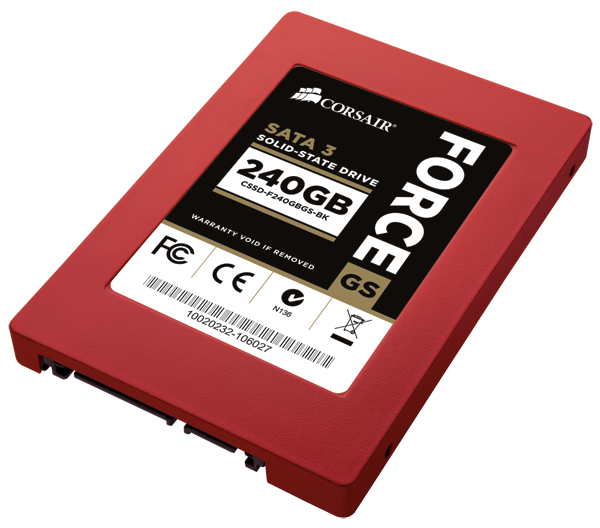

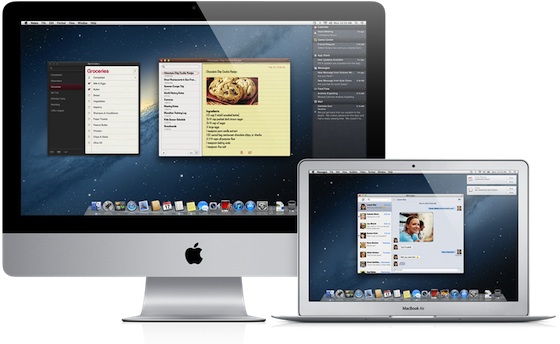

.jpg)
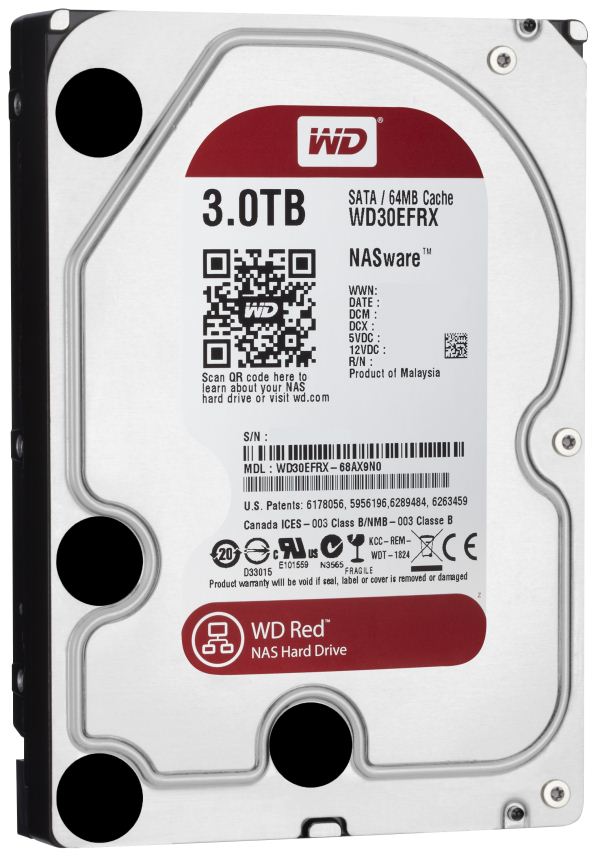
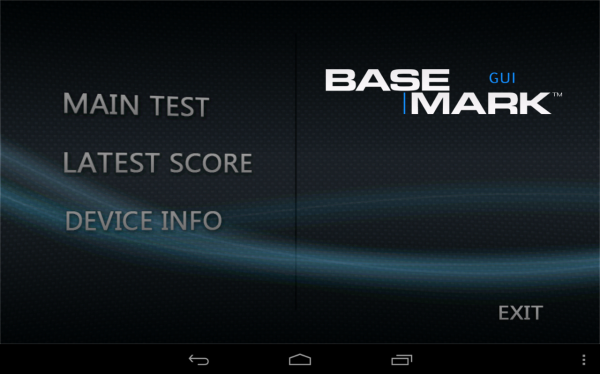






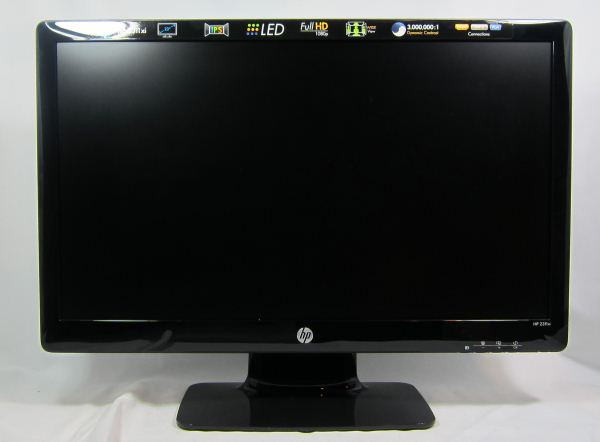
















Bookmarks